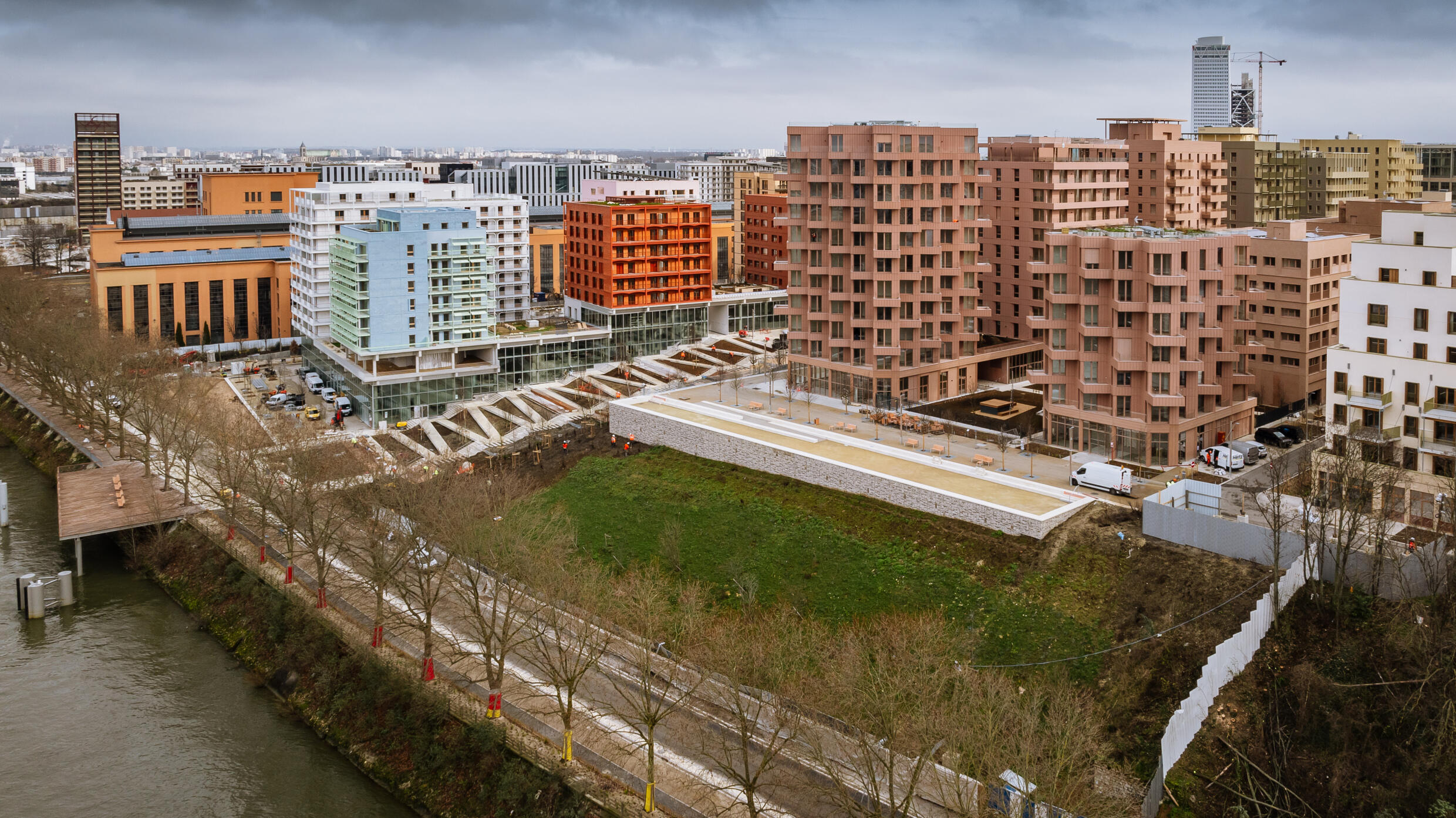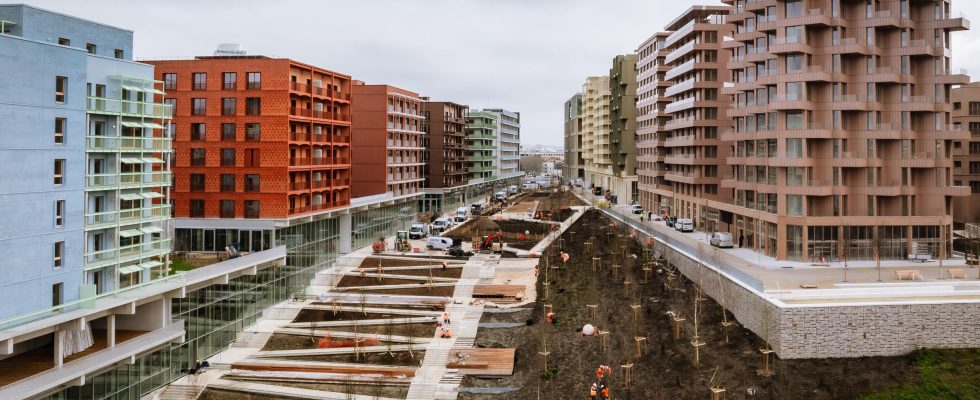This Thursday, February 29, President Emmanuel Macron inaugurated the Olympic village, which will accommodate up to 14,500 people at the height of the Olympic period: athletes and their companions. Solideo, the public establishment responsible for its construction, officially handed over the keys to this immense district to Paris 2024, the games organizing team. Visit to this village built in three communes in the north of Paris.
It is a district with an ultra modern, almost futuristic appearance, facing the Seine, the river which crosses Paris, a little further to the South. It stands out with the surrounding popular cities and their HLM towers.
The Olympic village covers 53 hectares, or 70 football fields, straddling the municipalities of Saint-Ouen and St Denis and connected by a footbridge to the town of Île-Saint-Denis. This space is crisscrossed by brand new streets, parallel and perpendicular to each other, which serve around forty buildings. No two are the same. An eclecticism that we owe to around forty architects, who chose pale green, sky blue, khaki and even beige. Others preferred to keep the wood of the structures visible.
Adapting the neighborhood to climate change
If the designers of this village chose to create several medium-sized buildings, generally less than ten floors, rather than large bars, it is to respond to a bioclimatic and environmental challenge.
Solideo, the public establishment responsible for construction, adapted this district to the climate imagined in 2050. It was therefore necessary to find solutions so that the housing could withstand high heat in summer. The plan of the district thus allows the air and freshness brought by the Seine to circulate better between the buildings.
Green spaces on public roads, green roofs, insulation of buildings and a geothermal energy network must make it possible to maintain the interior temperature of homes below 28 degrees Celsius during heatwaves. They will therefore not be equipped with air conditioning.
An ecological village
Solideo prides itself on having halved the carbon footprint of these buildings, over their entire lifespan compared to a usual construction site, thanks to the materials used but also the reuse of buildings already existing on the site.
A little over six years ago, this district had only a few businesses, film studios and a former electrical factory, which once powered the Paris metro. No question of clearing out space. On the contrary, it was around these buildings that the Olympic village was designed, which obviously had the first advantage of being less than thirty minutes by transport from any Olympic site in the Paris region.
“ We saw in Rio or even in Tokyo, temporary installations and equipment of very good quality but also extremely expensive and energy-consumingexplains Laurent Michaud, the director of the Olympic village for Paris 2024. So there, the idea was clearly to configure a village based on existing and sustainable infrastructure.. »
La Cité du Cinéma, a studio complex installed in part of the former electrical factory, will thus become the athletes’ restaurant, open 24 hours a day, offering 3,200 seats, for 40,000 meals served each day.
Other industrial buildings will house a fitness room or a leisure area. A school of osteopathy and physiotherapy will also be transformed into a polyclinic.
Eight athletes per apartment
Laurent Michaud, the director of the Olympic village for Paris 2024, acts as a real estate agent. He pushes open the door to one of the apartments which will be occupied by athletes from July 18, a little before the start of the events. “ We are in an apartment of eight people and that will be the maximumhe explains. There will be two athletes per room of twelve square meters. And for bathrooms, the ratio is four athletes per bathroom. »
Laurent Michaud then enters one of the bedrooms, already equipped with beds to emphasize the specificity of the furniture. The bed base is made of cardboard, the mattress is made of recycled fishing nets and everything can support 250 kilos maximum. “ The athletes told us that they had slept very well in Tokyo, specifies the village boss. So we called back the same suppliers. »
Another particularity of the accommodation is that they all respect what we call universal accessibility. They are adapted to all forms of disability.
Now that the keys are in the hands of Paris 2024, all the apartments will be able to be furnished and equipped.
Accommodation for 45 delegations has already been allocated. It is the most important ones who had the first chance to choose their location, according to very personal criteria. Some delegations favor proximity to the restaurant or the bus parking that will take them to the Olympic sites. Others prefer buildings further away from the bustle of the village.

The future of the neighborhood
Solideo specifies that it first thought of this district as a heritage for the inhabitants of Seine-Saint-Denis. “ The idea was first to imagine a real neighborhood with all the functions that make up the city; housing, offices, shops, schools, says Julia Watson, the village’s deputy president for the construction company. And once we decided on this programming, we worked on how this district could accommodate, in an intermediate stage, 14,5000 people for the Olympic Games and 9,000 for the Paralympic Games.. »
6,000 residents and 6,000 employees will take possession of the district at the end of 2025. Until then, when the games are over, Solideo will take over and work on converting the apartments in particular. They do not currently have a kitchen. Some partitions will be removed to enlarge the living spaces.
Businesses will also open on the ground floor of the buildings. And a large park will replace the Olympic bus parking lot. New school groups and new nurseries will accompany the development of this future district, which will be made up of 25% social housing.
